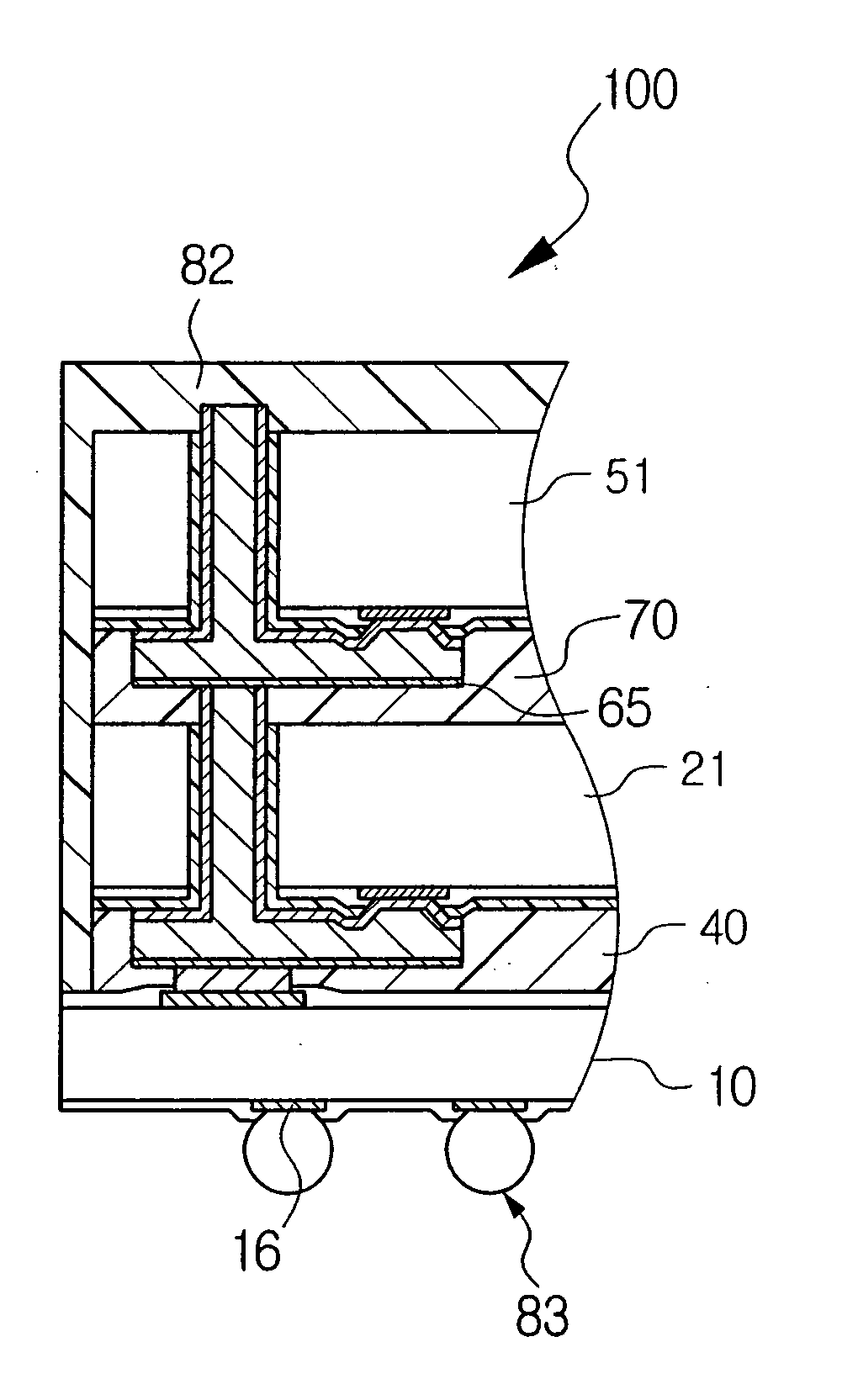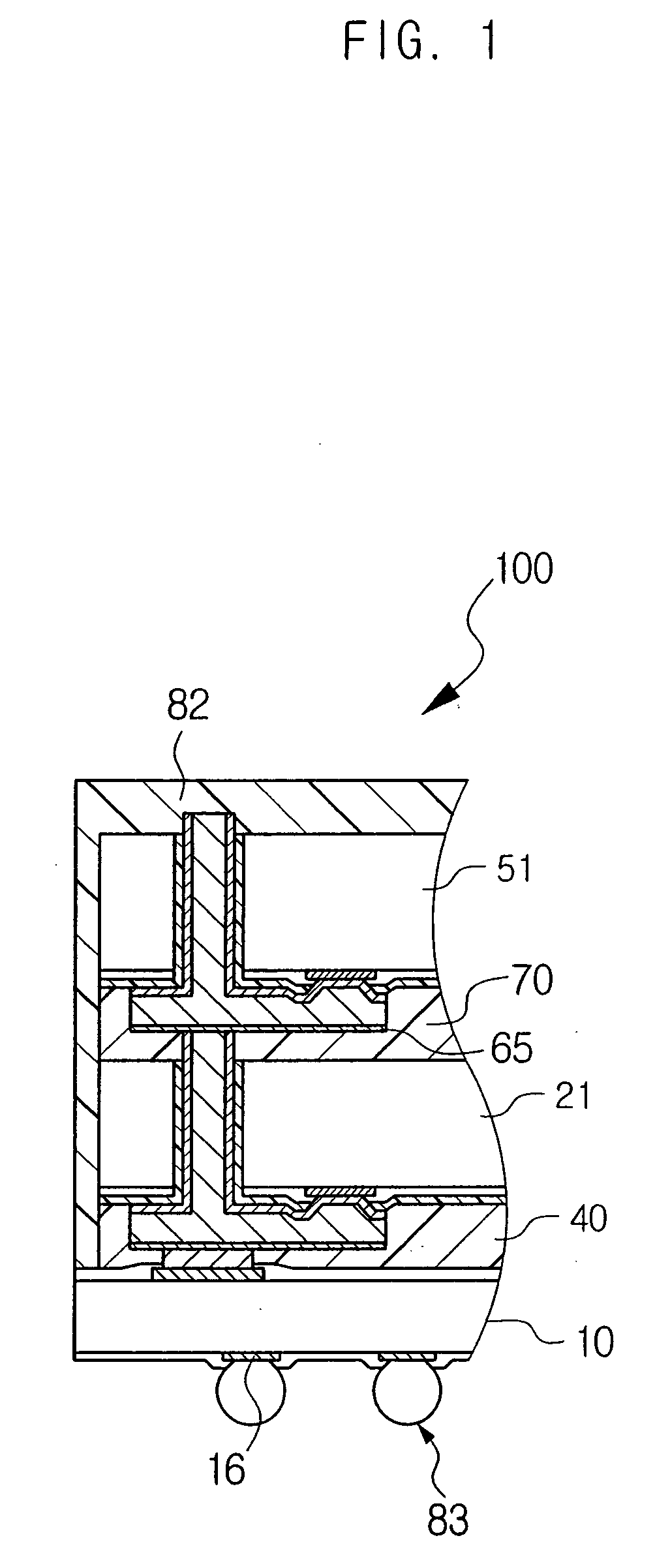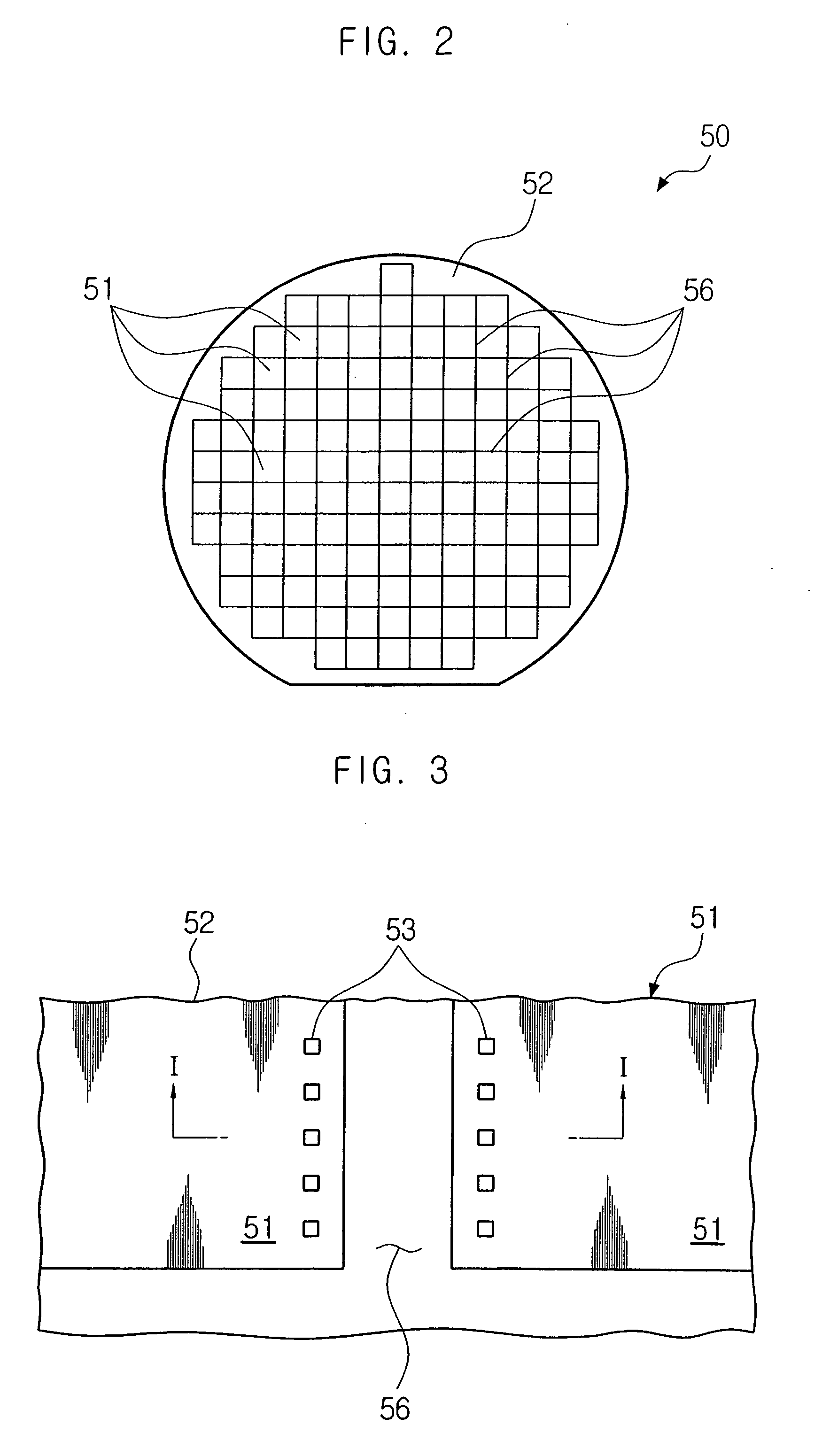Stacked chip package using photosensitive polymer and manufacturing method thereof
a technology of photosensitive polymer and chip package, which is applied in the direction of semiconductor devices, semiconductor/solid-state device details, electrical apparatus, etc., can solve the problems of high yield, relative bulky and cumbersome modem applications, and difficulty in ensuring the quality of chips/wafers, so as to improve mechanical reliability, improve the adhesion between chips/wafers, and alleviate the problem of problems
- Summary
- Abstract
- Description
- Claims
- Application Information
AI Technical Summary
Benefits of technology
Problems solved by technology
Method used
Image
Examples
Embodiment Construction
[0055] The present invention will now be described more fully hereinafter with reference to the accompanying drawings, in which preferred embodiments of the invention are shown. This invention may, however, be embodied in different forms and should not be construed as limited to the embodiments set forth herein. In the drawings and related description, if a first layer is referred to as being “on” another layer, the first layer can be directly on the other layer, or intervening layers may be present. Like numbers refer to like elements throughout the specification.
[0056]FIG. 1 is a sectional view of a stacked chip package in accordance with the present invention. A stacked chip package according to the embodiment of FIG. 1 includes a printed. circuit board 10, upon which a chip stack including a first chip 21 and a second chip 51 are mounted. The first chip 21 is mechanically bonded to the printed circuit board 10 by a first photosensitive polymer layer 40. The second chip 51 is me...
PUM
 Login to View More
Login to View More Abstract
Description
Claims
Application Information
 Login to View More
Login to View More - R&D
- Intellectual Property
- Life Sciences
- Materials
- Tech Scout
- Unparalleled Data Quality
- Higher Quality Content
- 60% Fewer Hallucinations
Browse by: Latest US Patents, China's latest patents, Technical Efficacy Thesaurus, Application Domain, Technology Topic, Popular Technical Reports.
© 2025 PatSnap. All rights reserved.Legal|Privacy policy|Modern Slavery Act Transparency Statement|Sitemap|About US| Contact US: help@patsnap.com



